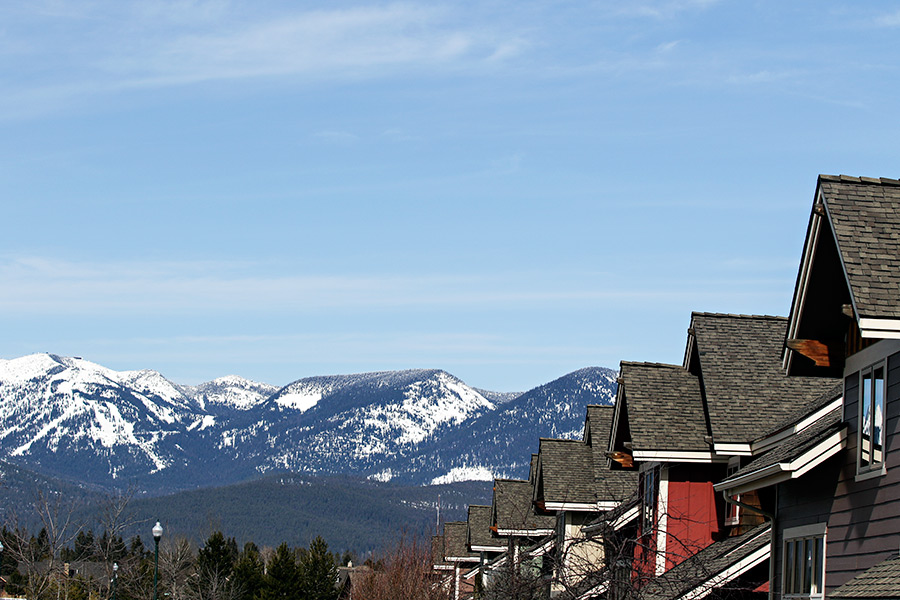The Whitefish City Council on Monday adopted a blueprint to guide the community as it grapples with an affordable housing crisis, while members of the public and city leaders emphasized the need to put the plan’s recommended strategies into swift action.
According to a workforce housing needs assessment released in December 2016, middle-income, working-class Whitefish residents have limited options when it comes to finding comfortable, cost-effective living arrangements, a problem that is displacing locals and forcing them to live outside their chosen community — 56 percent of Whitefish’s workforce lives in neighboring communities, 34 percent of whom would prefer to live in Whitefish.
Seasonal workers face a scarce rental inventory, while homeownership remains out of reach for young professionals looking to enter an outsized market that towers above the average household income.
“As you tackle this please try to maintain the momentum,” Melanie Rees, a consultant who was part of the team that drafted the plan and the needs assessment, said. “People are charged now and a lot of good effort has been put in and I can just sense people biting at the bit. But it’s important to listen and adapt.”
Rees said Whitefish needs 980 total housing units to accommodate employee households through 2020, about 375 of which will be provided by the free market under current conditions. That leaves 605 residential units that would rent for $1,000 or less a month or could be purchased for less than $310,000 in the next three years.
Community members and business leaders who spoke during the public hearing were effusive about the need to tackle the problem.
Kate Berry, a Whitefish native and young mother, said she and her partner carry a combined 20 years’ experience working in Whitefish’s service industry, which stands out as a prominent economic engine in the mountain community.
“On behalf of people who work in the service industry in Whitefish who have chosen to raise their children here I just want to implore city council and the entire community of Whitefish to consider affordable housing as kind of the cornerstone of our community,” Berry said. “We are the lifeblood of this community. We contribute to the social and cultural capital of this community. We are raising fine children who deserve to go to some of the best schools in the state of Montana.”
Recommended strategies for the next three years include: developing the city’s snow lot at the corner of Columbia Avenue and Railway Street for affordable housing; crafting a mandatory inclusionary zoning program; pursuing an annexation policy that ensures affordable housing for the community is developed along with any residential extension of growth and services; zoning specifically for affordability; increasing or reallocating the city’s resort tax; and removing regulatory barriers to make it more affordable for developers to build workforce housing.
“It’s really diverse, it’s really balanced, and in terms of the fairness test it broadly distributes responsibility for workforce housing throughout the community,” Rees said. “But this is a situation where there is no silver bullet, so it is going to be kind of anything and everything to produce housing or preserve housing that exists for certain members of the community.”
The plan’s goals also include maintaining Whitefish’s residential mix of 65 percent ownership, 35 percent rental. Additionally, rentals should be available to those earning a household income of $40,000, while ownership should be attainable to household incomes of $75,000.
Rent or mortgage payment should be equal to or no greater than 30 percent of a household income.
Rees stressed that in the case of Whitefish, affordable housing is not synonymous with low-income housing.
“In high-cost mountain communities like Whitefish, moderate and middle-income families cannot afford market housing prices,” she said. “So the term ‘affordable’ is not synonymous with low-income housing as is often the case in urban communities.”
Dan Graves, CEO of Whitefish Mountain Resort, said he employees 505 workers in winter and 150 workers in the summer months, many of who can’t afford to live in Whitefish.
“You saw the numbers. We need to do everything we can to get behind and at least stay even where we’re at if not catch up for all the workforce members that need housing close by,” Graves said.
More information is available to the public online at www.whitefishhousing.com
